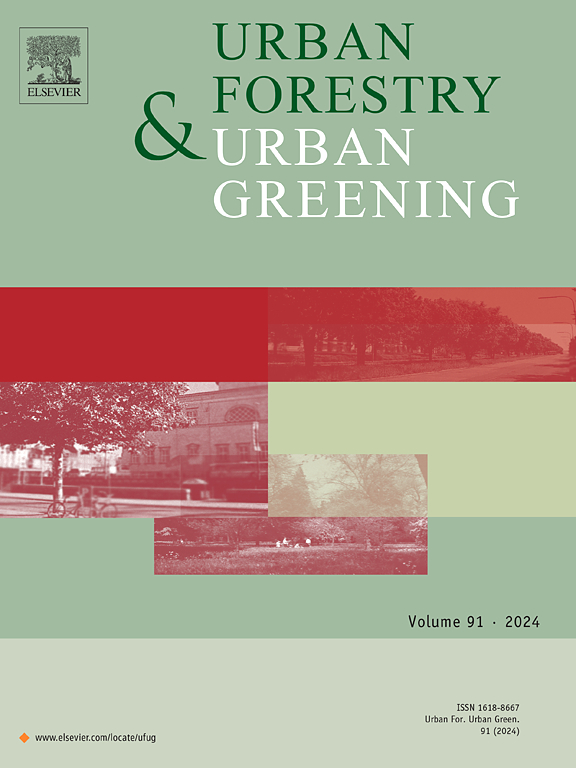Fusing aerial photographs and airborne LiDAR data to improve the accuracy of detecting individual trees in urban and peri-urban areas
IF 6
2区 环境科学与生态学
Q1 ENVIRONMENTAL STUDIES
引用次数: 0
Abstract
Urban trees provide essential social, economic, and environmental benefits. The sustainable management of urban trees often requires basic information at the individual tree level. Aerial photographs and airborne LiDAR are two primary remote sensing data sources widely used in developed countries for large-scale mapping of individual trees in urban areas. However, limited by the imaging principles of different data modes, achieving high mapping accuracy for individual trees using either of these two datasets alone is challenging. In this study, we aimed to leverage the respective advantages of aerial photographs and airborne LiDAR to improve the detection accuracy of individual trees. Utilizing a RetinaNet-based deep learning model, we first identified key metrics from aerial photographs and airborne LiDAR data for individual tree detection. Then, we rectified the misalignment of individual trees between the aerial photographs and airborne LiDAR data using a newly described object-oriented approach. Finally, we detected individual trees at the pixel level and the decision level, respectively. For pixel-level fusion, we combined the selected metrics (i.e., the red, green, and infrared bands as well as the canopy maximum model) from two datasets to detect individual trees. At the decision level, we fused the crowns of individual trees detected from the two rectified datasets. Our findings reveal that rectifying the misalignment between individual trees in both datasets significantly enhances detection accuracy, resulting in a notable increase in F1-score from 0.724 to 0.828. Furthermore, our results indicate that the decision-level data fusion approach yields the highest detection accuracy, with an F1-score of 0.814. This performance surpasses that of aerial photographs (F1-score: 0.592) and airborne LiDAR (F1-score: 0.776) individually. Our study underscores that integrating aerial photographs and airborne LiDAR data is an effective approach to improve the detection accuracy of individual trees in heterogeneous urban and peri-urban landscapes.
求助全文
约1分钟内获得全文
求助全文
来源期刊

Urban Forestry & Urban Greening
FORESTRY-
CiteScore
11.70
自引率
12.50%
发文量
289
审稿时长
70 days
期刊介绍:
Urban Forestry and Urban Greening is a refereed, international journal aimed at presenting high-quality research with urban and peri-urban woody and non-woody vegetation and its use, planning, design, establishment and management as its main topics. Urban Forestry and Urban Greening concentrates on all tree-dominated (as joint together in the urban forest) as well as other green resources in and around urban areas, such as woodlands, public and private urban parks and gardens, urban nature areas, street tree and square plantations, botanical gardens and cemeteries.
The journal welcomes basic and applied research papers, as well as review papers and short communications. Contributions should focus on one or more of the following aspects:
-Form and functions of urban forests and other vegetation, including aspects of urban ecology.
-Policy-making, planning and design related to urban forests and other vegetation.
-Selection and establishment of tree resources and other vegetation for urban environments.
-Management of urban forests and other vegetation.
Original contributions of a high academic standard are invited from a wide range of disciplines and fields, including forestry, biology, horticulture, arboriculture, landscape ecology, pathology, soil science, hydrology, landscape architecture, landscape planning, urban planning and design, economics, sociology, environmental psychology, public health, and education.
 求助内容:
求助内容: 应助结果提醒方式:
应助结果提醒方式:


